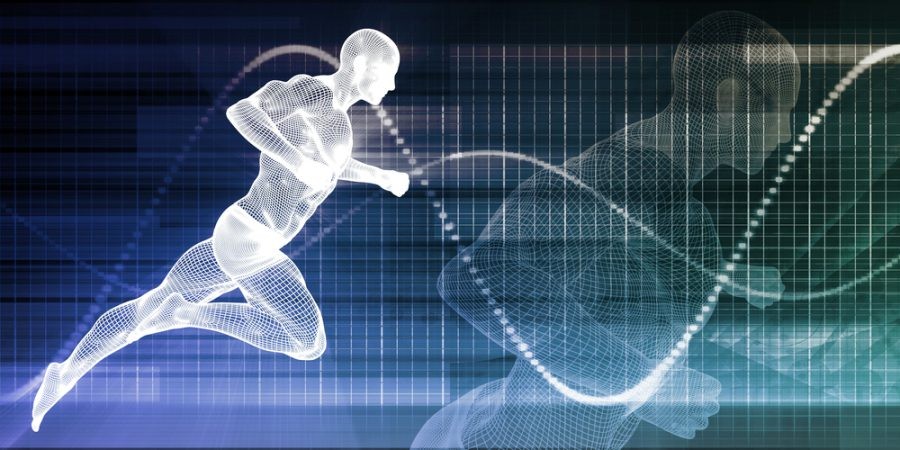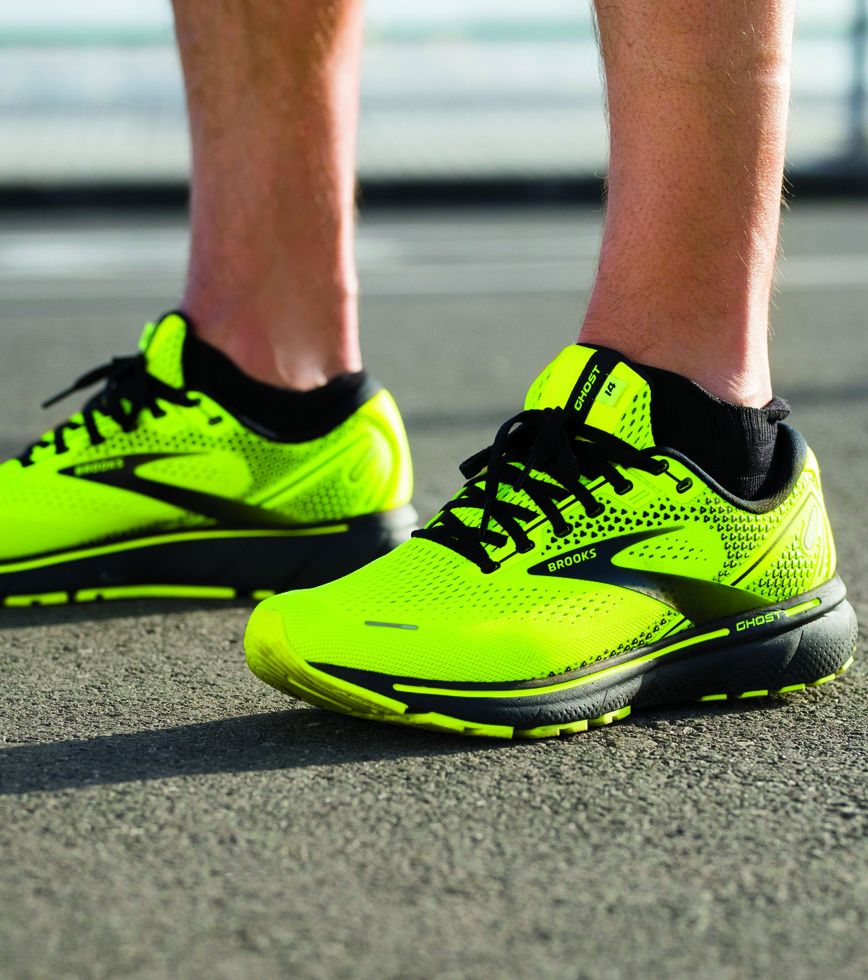In the realm of sports, the integration of advanced technologies like artificial intelligence (AI) is transforming how athletes train and perform. This article explores the impact of AI-driven personalization, data analytics, wearable technology, and AI coaching, providing valuable insights into how these innovations enhance athletic performance. By understanding these technologies, athletes and coaches can effectively address training challenges, optimize performance, and prevent injuries, ultimately leading to improved outcomes in their sporting endeavors. Dive into the details to discover how you can leverage these advancements to unlock your full potential in sports.
In this article you will find:
AI Driven Personalization in Training Programs
As the landscape of sports and fitness evolves, artificial intelligence is becoming a cornerstone of personalized training programs. The integration of AI technologies allows trainers and athletes to tailor workouts that suit individual needs, leading to enhanced performance and faster progress. In this section, we will explore how AI-driven personalization is revolutionizing training programs, making them more effective, efficient, and aligned with each athlete’s unique goals.
The Role of AI in Personalizing Workouts
AI technology is capable of analyzing vast amounts of data to develop personalized training regimens. By leveraging machine learning algorithms, AI can assess an athlete’s performance metrics, physical capabilities, and even psychological factors. This data-driven approach enables trainers to create workouts that are not only tailored to the athlete’s current condition but also adaptable over time as their skills and fitness levels improve.
- Performance Metrics: AI systems can track metrics such as heart rate, power output, and speed, providing insights that inform training decisions.
- Behavioral Analysis: By analyzing patterns in an athlete’s training history, AI can identify what works best for them, optimizing future training sessions.
- Goal Setting: AI can assist in setting realistic and achievable goals based on individual performance data and industry benchmarks.
Benefits of AI-Driven Personalization
The advantages of integrating AI into training programs extend beyond just personalized workouts. Here are some key benefits:
- Increased Efficiency: Personalized training plans save time by focusing on exercises that yield the best results for the individual.
- Enhanced Motivation: Tailored programs can keep athletes engaged and motivated, as they see progress and reach milestones that are specifically relevant to them.
- Reduced Risk of Injury: By monitoring an athlete’s physical response to workouts, AI can help adjust training loads and prevent overtraining or injury.
Examples of AI Personalization in Action
Several companies and platforms are leading the way in incorporating AI into personal training. For instance, Rapsodo provides innovative analytics technology that helps athletes in sports like baseball and golf improve their game through data-driven insights. Their systems analyze swing mechanics and offer personalized feedback, allowing players to refine their techniques effectively.
Moreover, platforms like MyFitnessPal are utilizing AI to suggest personalized meal plans based on individual fitness goals and dietary preferences. This holistic approach ensures that athletes are not just training effectively but also fueling their bodies correctly for optimal performance.
Future Trends in AI-Driven Personalization
As AI technology continues to advance, we can anticipate even more sophisticated personalization in training programs. Future developments may include:
- Wearable Technology Integration: Enhanced wearables that provide real-time feedback and adjustments to training plans based on live data.
- AI Coaches: Virtual coaching assistants powered by AI that offer guidance and motivation during training sessions, simulating the presence of a personal trainer.
- Predictive Analytics: Utilizing predictive models to forecast an athlete’s performance and suggest preventive measures for potential injuries or burnout.
In conclusion, AI-driven personalization in training programs is not just a trend; it is a transformative approach that is reshaping how athletes train. By harnessing the power of AI, athletes can unlock their full potential, achieving their fitness goals with greater efficiency and safety. As we move forward, the possibilities for personalized training will only expand, paving the way for a new era in sports performance.
Data Analytics for Performance Improvement
In today’s competitive sports environment, the use of data analytics is pivotal for athletes and coaches aiming to enhance performance. By harnessing data, teams can gain insights into athlete behavior, performance trends, and areas for improvement. This section delves into how data analytics is transforming training methodologies and facilitating performance enhancements across various sports.
The Power of Data in Sports
Data analytics provides a comprehensive understanding of athletic performance by analyzing various metrics collected during training and competitions. By evaluating this data, coaches can make informed decisions that lead to improved training protocols and strategies. Some key areas where data analytics plays a crucial role include:
- Performance Tracking: Continuous monitoring of athletes’ performance metrics helps identify strengths and weaknesses, allowing for targeted training adjustments.
- Injury Prevention: By analyzing data patterns, coaches can predict potential injuries based on an athlete’s workload, fatigue levels, and biomechanics.
- Game Strategy: Data analytics can inform tactical decisions during games by analyzing opponent strategies and identifying optimal plays.
Key Metrics Analyzed in Sports
Various metrics are collected and analyzed to provide insights into athlete performance. Some of the most critical metrics include:
- Speed and Agility: Measuring an athlete’s sprint speed and agility through timing gates and video analysis can highlight areas for improvement.
- Heart Rate Variability: Monitoring heart rate during training helps assess recovery and readiness, ensuring that athletes train at the optimal intensity.
- Biomechanics: Analyzing movement patterns through motion capture technology can reveal inefficiencies and risk factors for injury.
Real-World Applications of Data Analytics
Several organizations are utilizing data analytics to elevate athlete performance. For instance, Rapsodo offers innovative performance analytics tools that allow athletes in sports like baseball and golf to analyze their movements and improve their skills based on data-driven insights. Their technology helps athletes understand their swings or pitches, leading to more effective training sessions.
Moreover, many professional teams are employing data scientists to analyze performance data and develop predictive models that assist coaches in making tactical decisions. This data-centric approach allows teams to stay ahead of the competition by adapting strategies based on real-time performance analysis.
The Future of Data Analytics in Sports
As technology continues to evolve, the potential for data analytics in sports is limitless. Future trends may include:
- Integration of AI: Combining artificial intelligence with data analytics can enhance predictive capabilities, allowing for even more tailored training and recovery plans.
- Advanced Wearables: Development of smart wearables that provide real-time data during competitions, enabling immediate feedback and adjustments.
- Big Data Applications: Leveraging big data analytics to analyze large datasets from multiple sources for deeper insights into athlete performance and team dynamics.
Data analytics is revolutionizing how athletes train and compete, providing them with the tools to improve performance and reduce injury risks. By embracing this data-driven approach, athletes can unlock their potential and achieve their goals more effectively than ever before.
Wearable Technology and Real-Time Feedback
In the rapidly evolving world of sports, wearable technology is making significant strides in enhancing athletic performance. These devices not only track physical activity but also provide real-time feedback that empowers athletes to optimize their training and recovery processes. This section explores the impact of wearable technology in sports, focusing on how these devices are transforming performance monitoring and training effectiveness.
The Rise of Wearable Technology in Sports
Wearable technology has gained immense popularity among athletes and fitness enthusiasts alike. Devices such as smartwatches, fitness trackers, and specialized sensors are now commonplace in training regimens. These tools are designed to monitor various physiological parameters, providing valuable insights that can enhance performance. Key features of wearable technology include:
- Heart Rate Monitoring: Continuous tracking of heart rate helps athletes gauge their exertion levels during workouts and optimize their training intensity.
- GPS Tracking: Wearables equipped with GPS capabilities allow athletes to track distance, speed, and route, which is particularly beneficial for runners and cyclists.
- Sleep Tracking: Monitoring sleep patterns aids in understanding recovery needs, ensuring athletes get adequate rest for optimal performance.
Real-Time Feedback Mechanisms
One of the most compelling aspects of wearable technology is its ability to provide real-time feedback. This instantaneous data allows athletes and coaches to make immediate adjustments to training sessions. Some examples of how real-time feedback is utilized include:
- Form Correction: Wearable sensors can detect improper biomechanics, alerting athletes to correct their form during exercises to prevent injury.
- Performance Metrics: Immediate access to metrics such as speed, pace, and power output enables athletes to push their limits while ensuring they remain within safe exertion levels.
- Training Load Monitoring: Wearables can calculate training loads in real-time, helping athletes manage their workouts to avoid overtraining and fatigue.
Impact on Training and Recovery
The integration of wearable technology into training regimens not only enhances performance but also optimizes recovery strategies. By analyzing data collected during training sessions, athletes can:
- Identify Weaknesses: Understanding which areas require more focus allows for more targeted training programs.
- Enhance Recovery: Real-time data on heart rate and exertion levels can help athletes determine when to rest, ensuring they recover adequately before the next training session.
- Stay Motivated: Instant feedback on progress can boost motivation, as athletes can see improvements and set new goals based on their performance data.
Examples of Wearable Technology in Action
Leading companies are at the forefront of developing innovative wearable technology for athletes. For example, WHOOP offers a fitness tracker that focuses on recovery, strain, and sleep, providing athletes with insights that help them optimize their training cycles. Another example is Fitbit, which combines fitness tracking with health monitoring features, allowing users to gain a comprehensive view of their health and performance.
The Future of Wearable Technology in Sports
The future of wearable technology promises even greater advancements. Trends that are likely to shape the next generation of wearables include:
- Integration with AI: Future wearables may incorporate artificial intelligence to provide more personalized insights and recommendations based on individual performance data.
- Enhanced Connectivity: Wearables will likely become more integrated with other devices and platforms, allowing for a seamless flow of data across various training applications.
- Improved Accuracy: As technology advances, we can expect more precise tracking capabilities, making wearable technology an even more invaluable tool for athletes.
Wearable technology and real-time feedback are revolutionizing the way athletes approach their training, providing them with the tools they need to achieve peak performance. By leveraging these advancements, athletes can train smarter, recover better, and ultimately reach new heights in their respective sports.
The Future of AI Coaching in Sports
The integration of artificial intelligence into sports coaching is revolutionizing how athletes train, compete, and achieve their goals. As technology advances, AI coaching is poised to become an indispensable tool for athletes at all levels. This section explores the future of AI coaching in sports, focusing on how it will enhance training methodologies, improve performance, and reshape the overall athletic experience.
Enhanced Personalization through AI
One of the most significant advantages of AI coaching is its ability to offer personalized training experiences. Future AI systems will leverage vast amounts of data to create customized workout plans tailored to individual athletes’ needs, preferences, and performance metrics. Key advancements in personalization include:
- Adaptive Training Plans: AI algorithms will analyze real-time data to adjust training regimens based on an athlete’s performance, fatigue levels, and recovery status.
- Goal-Oriented Coaching: AI systems will be able to set realistic, achievable goals for athletes based on historical data and performance projections, ensuring continuous progress.
- Holistic Performance Insights: By integrating data from various sources, AI will provide comprehensive insights that address not only physical training but also mental readiness and nutrition.
Predictive Analytics for Injury Prevention
Injury prevention is a critical aspect of athletic training, and AI is set to play a vital role in this area. By utilizing predictive analytics, AI coaching systems can identify potential injury risks before they become serious issues. This includes:
- Monitoring Biomechanics: Advanced algorithms will analyze an athlete’s movement patterns to detect abnormalities that could lead to injuries.
- Workload Management: AI will assess training loads and suggest optimal rest periods to prevent overtraining and fatigue-related injuries.
- Historical Data Analysis: By examining past injuries and performance data, AI can predict future risks and recommend preventive measures tailored to the athlete.
AI-Powered Feedback and Support
As AI technology evolves, the feedback provided to athletes will become more instantaneous and relevant. Future AI coaching systems will offer:
- Real-Time Analysis: Athletes will receive immediate feedback on their performance during training sessions, allowing for quick adjustments to technique or strategy.
- Virtual Coaching: AI-driven virtual coaches will guide athletes through workouts, providing cues and encouragement based on their performance data.
- Enhanced Communication: AI will facilitate better communication between athletes and coaches, allowing for seamless sharing of insights and adjustments to training plans.
Integration with Wearable Technology
The future of AI coaching will be closely linked with the advancements in wearable technology. As wearables continue to evolve, AI coaching systems will integrate seamlessly with these devices to enhance performance monitoring. This includes:
- Comprehensive Data Collection: Wearable devices will gather a wide array of metrics, including heart rate, movement patterns, and environmental conditions, feeding this data into AI coaching systems.
- Personalized Recommendations: AI will analyze data from wearables to provide tailored recommendations for training intensity, recovery strategies, and nutrition.
- Enhanced User Experience: The integration of AI with wearables will create a more engaging and interactive training experience for athletes, keeping them motivated and informed.
Ethical Considerations and Future Challenges
While the future of AI coaching in sports holds immense potential, it also brings ethical considerations and challenges that must be addressed. These include:
- Data Privacy: Ensuring that athlete data is protected and used responsibly will be crucial as AI systems collect and analyze sensitive information.
- Equity in Access: As AI coaching becomes more prevalent, ensuring equitable access for athletes across different socioeconomic backgrounds will be essential.
- Dependence on Technology: Striking a balance between human coaching and AI assistance will be vital to maintain the personal touch in coaching relationships.
The future of AI coaching in sports is bright, with the potential to transform how athletes train, recover, and compete. As technology continues to advance, AI will become an integral part of the athletic experience, empowering athletes to reach their full potential and achieve new heights in their performance. The integration of artificial intelligence (AI) in sports coaching is transforming training methodologies by offering personalized experiences tailored to individual athletes’ needs. AI systems analyze vast amounts of data to create adaptive training plans, set realistic goals, and provide holistic performance insights that encompass physical training, mental readiness, and nutrition. Furthermore, predictive analytics play a crucial role in preventing injuries by monitoring biomechanics and assessing workload management.
As wearable technology continues to evolve, its seamless integration with AI coaching systems enhances real-time performance monitoring and feedback, allowing athletes to make immediate adjustments to their training. However, ethical considerations such as data privacy, equitable access, and maintaining a balance between human coaching and AI assistance must be addressed as AI becomes a staple in athletic training. Athletes can leverage these advancements to optimize their training, recover effectively, and ultimately reach their full potential.




